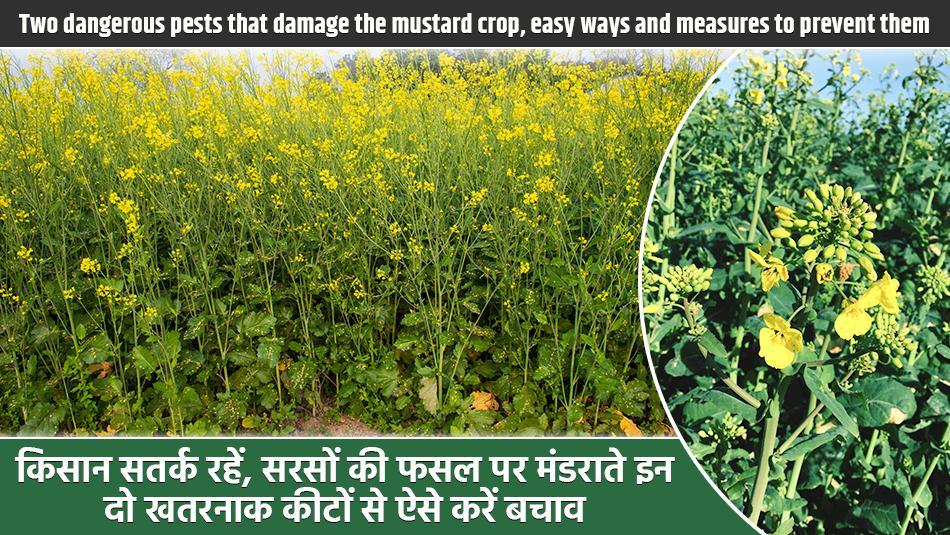
Mustard is one of the most important crops of the Rabi season. It includes varieties like Toria, Raya, Taramira, Bhuri, and Yellow Mustard. States like Haryana, Rajasthan, Uttar Pradesh, and Madhya Pradesh grow mustard on a large scale. Due to its low water requirements, mustard farming proves to be more profitable for farmers.
Regular care and timely identification of diseases are crucial for mustard crops. Agricultural scientists believe that early identification and prevention of diseases can increase yield. Let’s learn about the major diseases of mustard crops, their symptoms, and prevention methods.
1. Alternaria Blight
This is the most common disease affecting mustard crops. The symptoms are:
2. Fulia or Downy Mildew
The symptoms of this disease are seen on the lower surface of the leaves:
3. White Rust
This disease mainly affects late-season crops:
4. Stem Rot Disease
The symptoms of this disease are visible on stems and branches:
1. For Alternaria Blight, Fulia, and White Rust:
2. For Stem Rot Disease:
3. Correct Timing for Spraying:
Scientists from the Department of Oilseeds at Chaudhary Charan Singh Haryana Agricultural University have provided specific recommendations to help farmers combat these diseases. After visiting research areas, they advised farmers to control diseases for better crop yield.
Timely identification and prevention of mustard crop diseases can lead to better profits for farmers. By adopting advanced scientific techniques, farmers can enhance both the quality and quantity of their crops.
Regular care and disease management are essential in mustard farming. By following timely spraying schedules and scientific advice, farmers can protect their crops from diseases. Awareness and the right methods can help farmers achieve higher profits at lower costs.
Latest Update